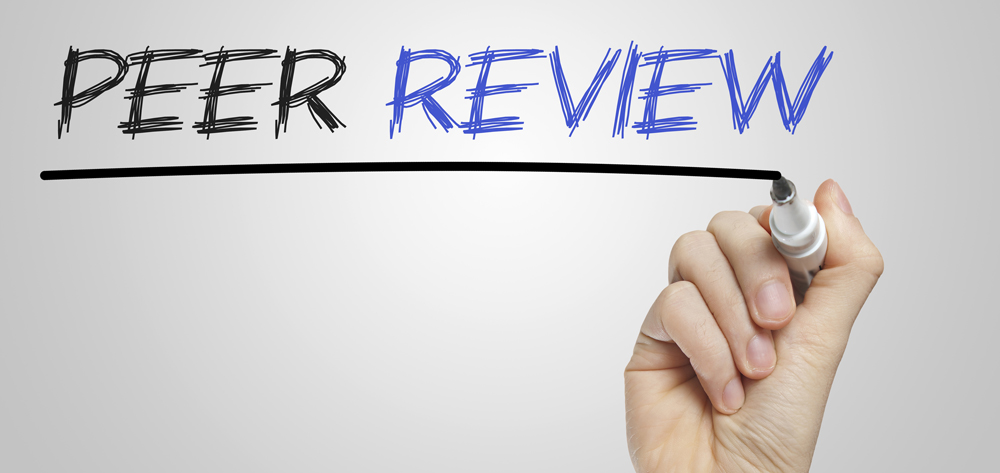In a healthcare climate that insists on transparency and high-quality nursing care, the timing is right for nurses to take ownership of their profession and use a nursing peer review (NPR) process. Not to be confused with nursing peer evaluation in the setting of performance evaluation, NPR identifies safety concerns and provides evidence-based solutions to improve the quality of nursing performance. NPR is a structured process where care is assessed and reviewed by nursing peers within a just culture setting to ensure the highest quality of patient care.
Placing the primary responsibility and accountability for nursing practice among nurses strengthens our profession by allowing us to regulate and evaluate ourselves. If we don’t do that, we leave the gap open for other disciplines to control what we do. Here is more about NPR and how to implement it, based on my experience at Sentara Princess Anne Hospital in Virginia Beach, Virginia.
Setting the stage
The American Nurses’ Association (ANA) has supported NPR since 1972, and in 1988 published guidelines for the process. When our nursing team looked into developing NPR at our facility, a literature search helped us find tools we could use in our committee reviews and outlines of what the process should look like, but we found only a few recommendations on the overall implementation process to guide us in answering questions such as:
- How do you take a facility-based community of nurses and create a well-educated, polished team of experts who can review cases and change nursing practice?
- How do you overcome obstacles along the way that may prevent the process from moving forward?
Having been through the process with a successful outcome, we can now share our tips and experience with others.
How it works
NPR is a structured process that begins with referral of a quality case from one of several avenues, including the quality department, staff nurses, physician peer review, or situations in which the nursing practice is in question. The review process after each case presentation includes a discussion on how the nursing actions compare to ANA Scope and Standards of Nursing Practice, with the goal of identifying opportunities for improvement. Once the case and the outcomes have been thoroughly discussed, the team creates a “lessons learned” document that is shared throughout the hospital’s nursing community to help improve practice. This document includes a brief synopsis of the case reviewed, along with the committee’s recommendations on how to prevent the situation from happening again. The recommendations may be referred to another committee, such as our education council, and may address specific nursing knowledge gaps.
Steps to Implementation
In the spring of 2014, our nursing team began implementing NPR. Through careful planning and a step-by-step approach, we were able to assemble a highly competent nursing peer review team, which is making changes for the better within our community of nurses.
Step 1: Clarify expectations.
We had to start with the basics to create a solid foundation. After months of conducting literature searches, we created a proposal for our nurse executive that clearly outlined our objectives, demonstration of need, cost/benefit analysis, and an education timeline. This allowed us to discuss our thoughts about NPR and to clarify expectations as we moved forward.
It’s vital to have the nurse executive’s support, so we needed to ensure we were all on the same page, with a clear understanding of the committee’s reporting structure.
Step 2: Educate, educate, educate.
The next step was to educate our nursing community about NPR and create awareness throughout the hospital. We presented NPR to the nursing leadership council, the hospital partnership council, the research committee, and our Magnet recognition committee. We created informational flyers and a poster to present during hospital week and nurses’ week. We also distributed flyers from unit to unit, answering nurses’ questions along the way.
Other education strategies included a short commentary in our hospital’s weekly huddle and an educational article for our nursing newsletter.
Step 3: Choose and notify committee members.
Nursing managers chose the committee members, who had to meet criteria and understand expectations. (See Nursing peer review committee members.)
Nursing peer review committee membersPeer review members, who cannot be team leaders or clinical II RNs, must meet the following expectations.
|
Once the managers selected the members, our nurse executive mailed a handwritten letter to each individual’s home, reaffirming the nurse’s excellent commitment to nursing and giving her support. This special touch was meaningful to the individuals, making them realize how valued they were as nursing professionals.
My cofacilitator and I then sent emails to the members and called to thank them for joining the team and answer any questions.
Step 4: Get the committee up to speed.
A few short weeks after membership had been finalized, the committee had its kickoff meeting, which we used as an introductory meeting and an educational session. We used the next two monthly meetings as learning sessions in which we had speakers present, and we facilitated simulated case scenarios.
In addition, members were assigned evidence-based articles to improve their knowledge of the NPR process. After just 3 months, the committee was ready to take on its first case. Using a buddy system, we assigned two members to a case to review and present at the next meeting. Remembering that these nurses had been chosen for their professionalism and nursing excellence, it didn’t surprise us how quickly they were ready for the challenge.
Step 5: Share lessons learned.
The ability of the NPR committee to communicate lessons learned to the nursing management team proved to be more difficult than expected. Despite the education and awareness that developed among the NPR team, it was clear that the leadership team was still unclear of NPR’s purpose and the expectations that had been set forth.
The cofacilitator of the committee and I decided to meet with our nurse executive again and revisit the reporting structure. We revised the structure to ensure we had the right players at the table to provide the most benefit for the lessons learned. Instead of directly reviewing the case and lessons learned in a small meeting of managers, our nurse executive allowed us to present to a larger group of nurse leaders and verbally supported the recommendations made. Her support and facilitation of the process gave clarity to any questions of the expectations placed and made it easier for the leadership team to carry out those expectations. The current process has the team processing the lessons learned more quickly, which allows for rapid distribution to the nursing staff.
Our future
In the coming months, we expect to see an increase in case referrals as nurses become more familiar with the process. Ultimately, we expect to see a decrease in the reoccurrence of safety issues as the team is able to redesign nursing-related systems and processes to enhance their effectiveness.
We have climbed over obstacles and learned much to get to where we are at today. The keys to successful implementation of an NPR process lie within the steps listed above and require a strong foundation of nursing leader support and team engagement. It’s within this framework that our nurses will be able to elevate nursing practice and ultimately promote patient safety and quality outcomes to the highest standards.
Selected references
American Nurses Association. Peer Review Guidelines. Kansas City, MO: American Nurses Association; 1988.
Barr F. Nursing peer review: raising the bar of quality. Am Nurse Today. 2010;5(9):46-8.
Haag-Heitman B, George V. Nursing peer review: principles and practice. Am Nurse Today. 2011;6(9):48-53.
Haag-Heitman B, George V. Peer Review in Nursing: Principles for Successful Practice. Sudbury, MA: Jones and Bartlett; 2011.
Morby SK, Skalla A. A human approach to nursing peer review. Nurs Sci Q. 2010;23(4):297-300.
Melissa Grootendorst is the clinical nurse manager for medical-oncology and the co-facilitator of the nursing peer review committee at Sentara Princess Anne Hospital in Virginia Beach, Virginia. Her cofacilitator is Lisa Lawson, BSN, RN, CNML, patient care supervisor at the hospital. For more information, email Grootendorst at magroote@sentara.com or Lawson at lclawson@sentara.com.


















